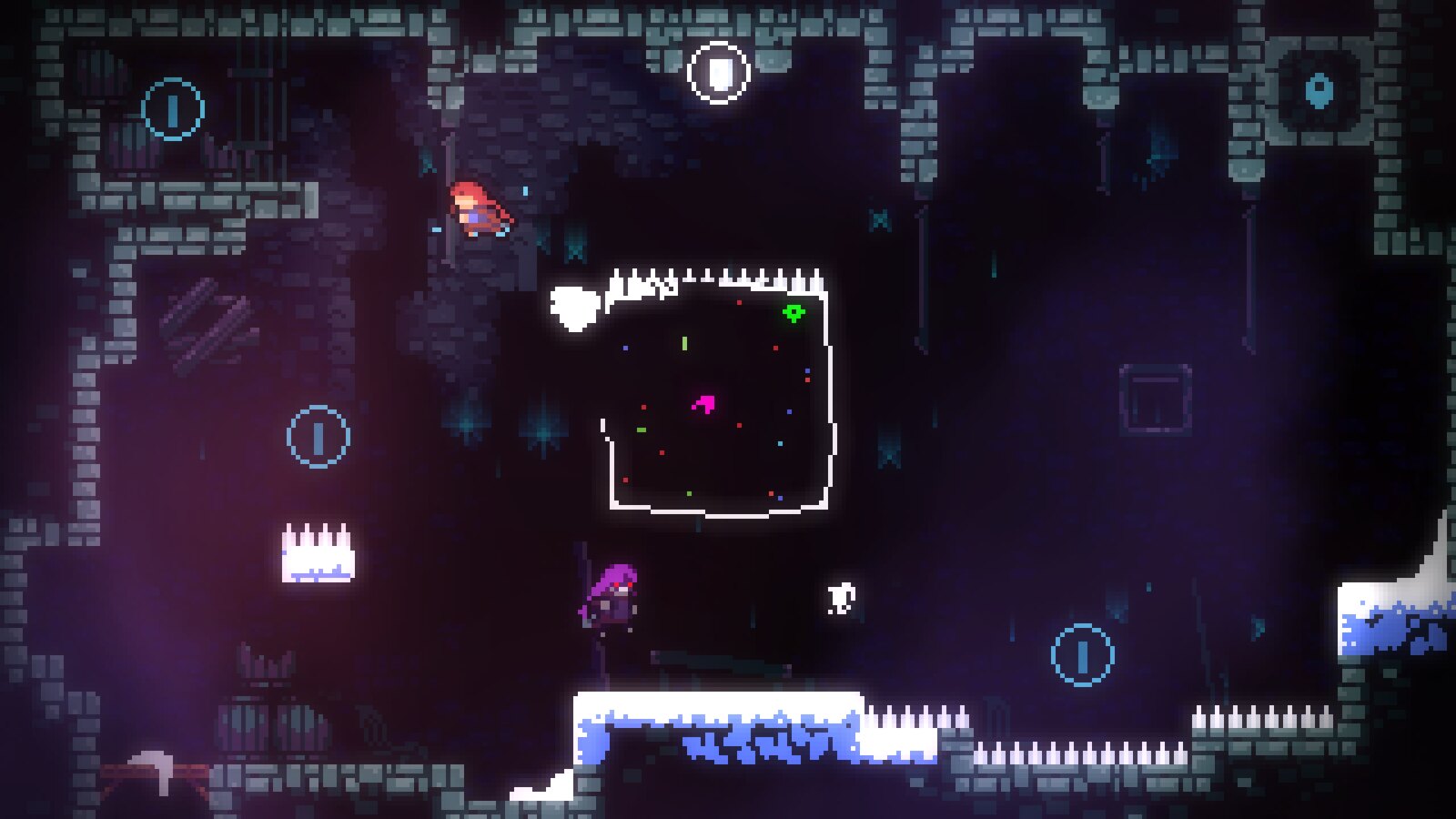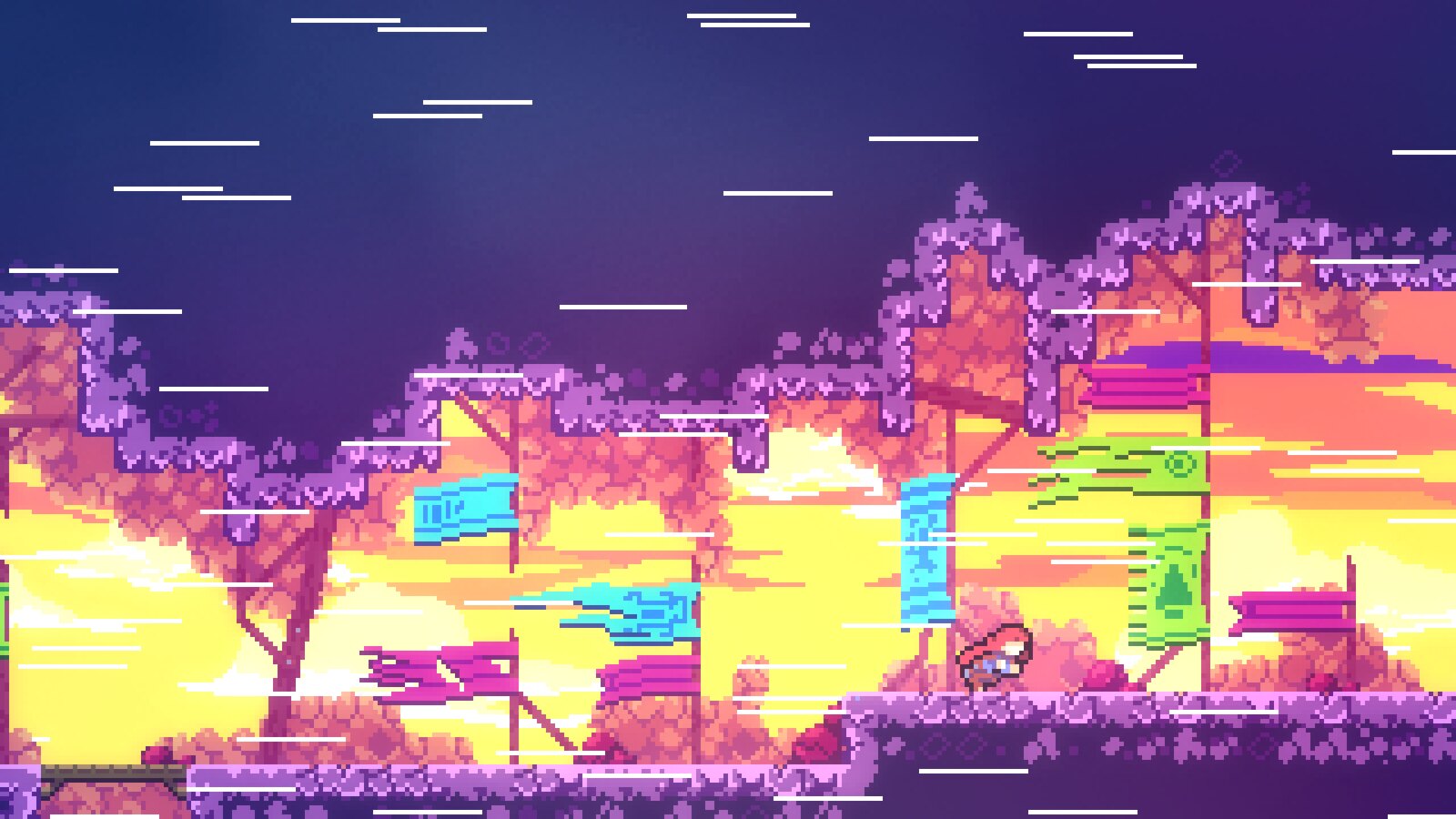
This 2D platformer with a retro aesthetic harbors a deeper lesson about personal growth
Celeste is a game about believing in yourself and the journey to discover what you are capable of.
While that may seem like quite the lofty statement for a 2D platforming game with a retro pixel-style aesthetic, being able to take away such an insightful and empowering feeling from a game is precisely what makes Celeste one of the best games of 2018.
Let’s start with the game itself. At its core, Celeste is a precision platformer where your eventual goal is to climb a mountain. Early on, you’re taught two moves: how to dash (press square and a direction), and how to wall climb (hold L2). The controls are snappy and fluid — at any given moment you feel in total control of your character. Jumping and dashing quickly become second nature, which is critical for game like this, because Celeste is hard.
Moments after starting the game, players are thrust into life-endangering situations. Bottomless pits, spike-lined floors, seemingly impassable chasms, and other deadly obstacles combine to create an almost overwhelming sense of anxiety at first glance. “How the heck am I supposed to do this?”, players may wonder.
This is where Celeste’s brilliant design begins to shine through. Once you start attempting these daunting obstacles, you start to formulate ideas on how it could be possible.
“Well, if I just drop here instead of using my dash…”
“What if i use this moving platform for extra momentum in my jump?”
Celeste rarely punishes you for dying — within seconds of failure, you respawn close to the challenge you were attempting, fresh for another go at it. Having that smooth, almost-instant intermission between attempts encourages you to take chances. You will die a lot in Celeste, but each death comes with a sense of renewed purpose rather than defeat.
Eventually, you’ll conquer what you may have initially regarded as impossible and carry that feeling of accomplishment into the next challenge. The game does a great job of layering on additional mobility elements and challenges at a perfect pace, building on what you’ve already learned while also making sure your next goal is clearly in front of you. This results in a continuous sense of being tested to the best of your abilities, so that any glimpses of self-doubt tend to be outweighed by the visibility of success being so close.
As you progress through the game, a meaningful narrative starts to develop with the game’s main character, Madeline, who has set out on a journey to climb Mt. Celeste to get away from her life in the city. But the further she climbs, the more setbacks get thrown her way, sowing self-doubt and causing Madeline to question whether she should be attempting the climb in the first place.
Memorable characters such as Mr. Oshiro, a ghostly hotel owner who can’t let go of his past, or Theo, a happy-go-lucky selfie chaser, cross paths with Madeline, providing not just conversation, but foils for her own journey of self-actualization. Our heroine interacts with them reluctantly at first, viewing them as obstacles and time-wasters on her own journey. But by lending her assistance, she ends up learning more about herself.
Just like Madeline, I didn’t think about the bigger picture of my journey while I was in the middle of it. My first playthrough was hyper-focused on just conquering the video game challenges in the moment. It was only after I had completed the main game that I was able to take a step back and really reflect on how far I had come. I moved on to the game’s challenging post-story “B-Side” levels with a sense of “Ok, this seems doable if I hop here and drop here” rather than “This seems impossible!” The skills I needed to conquer those challenges were already within my abilities, I just needed to discover them.
One of the elements I noticed early on, is that the game tracks how many deaths you have on each level. My first inclination as a competitive gamer was defeatist: “Ugh, I have so many deaths. I’m bad at this.” But after playing through the game I developed a new perspective: each one of those deaths was a learning experience. I began to see high death counts as a badge of honor for my perseverance, rather than blemishes on perfection. It’s a mindset I’ve tried to apply to other parts of my life as well. Therein lies Celeste’s greatest achievement — its potential to change a person’s way of thinking not only in playing a game, but outside of it as well.














Comments are closed.
5 Comments
Loading More Comments